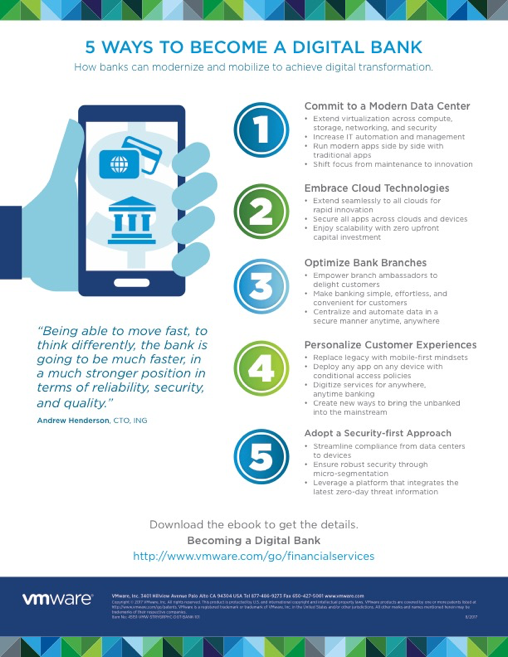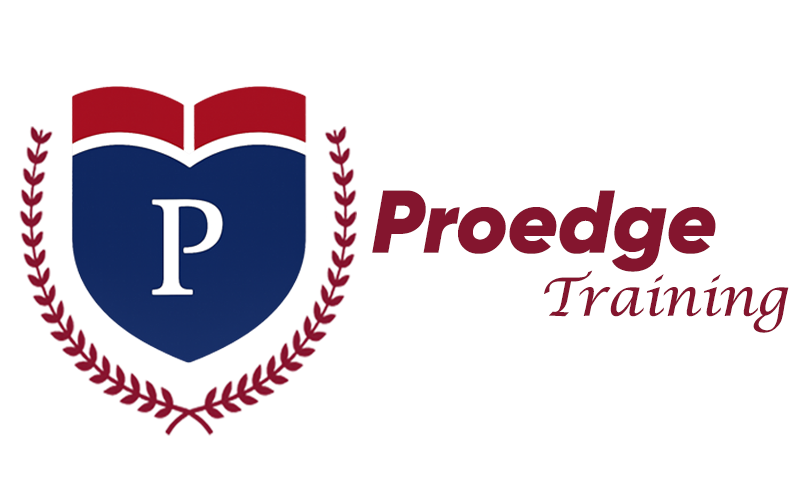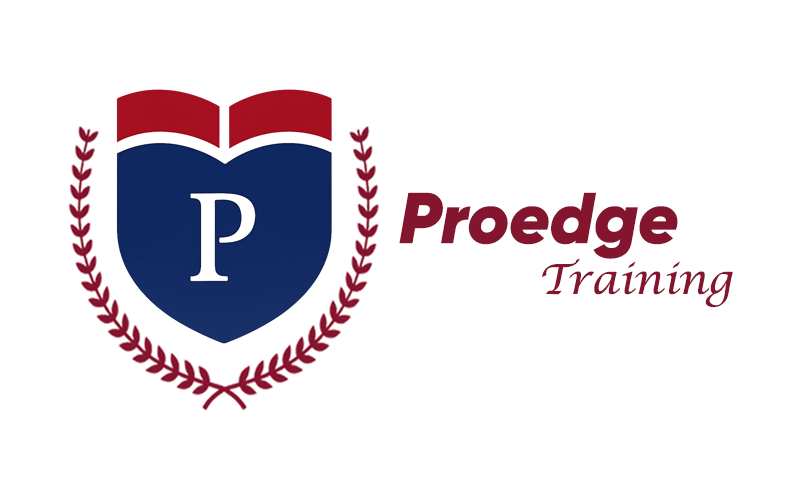How to Become a Digital Banking Expert: Step-by-Step Guide
Becoming a digital banker involves embracing technology and financial services. It’s about adapting to new tools and customer needs in finance. In today’s fast-paced world, digital banking is more important than ever. The shift from traditional banking to digital platforms offers exciting career opportunities. Banks need professionals who understand technology, security, and customer service. Learning digital banking skills can lead to a rewarding career. You’ll deal with online transactions, mobile apps, and cybersecurity. It’s about more than numbers; it’s about creating user-friendly experiences. Whether you’re a tech expert or a finance enthusiast, there’s a place for you. Dive into the world of digital banking and discover how you can be part of this growing industry. Ready to explore the digital banking landscape? Let’s get started!
Digital Banking Essentials
In the modern world, understanding digital banking essentials can empower individuals to navigate the evolving landscape of finance. Digital banking involves using technology to manage financial transactions and services online. This transformation has brought about significant changes in how people interact with banks. It leverages mobile banking apps, online banking services, and digital payment solutions, making banking more accessible and efficient. Whether you’re interested in a digital banking career or simply want to improve your user experience in banking, grasping the essentials is crucial. Let’s explore the key features and benefits to users.Key Features
Digital banking trends showcase innovative features that enhance banking innovation and user experience. Here’s what sets digital banking apart:- Accessibility: Mobile banking apps provide access to accounts anytime, anywhere.
- Security: Advanced encryption protects sensitive data.
- Convenience: Online banking services allow transactions without visiting a branch.
- Integration: Digital payment solutions integrate seamlessly with various financial technology platforms.
- Customization: Personalized services cater to individual preferences.
Benefits To Users
Digital banking offers numerous benefits that cater to the needs of modern consumers. Here are some significant advantages:- Efficiency: Transactions are processed quickly, saving time.
- Cost-Effective: Reduced fees compared to traditional banking methods.
- 24/7 Availability: Access your bank anytime, from anywhere.
- Enhanced Control: Track spending and manage accounts with ease.
- Financial Insights: Tools offer insights into spending habits and financial health.
Types Of Digital Banks
Digital banking is reshaping how people interact with their finances. Understanding the various types of digital banks is vital for anyone looking into digital banking careers or simply wanting to enhance their customer experience in banking. Whether you aim to work in online banking jobs or explore the latest banking technology trends, knowing the types of digital banks will provide a solid foundation.Neobanks
Neobanks are a new breed of banks that operate entirely online. They have no physical branches, making them highly accessible through mobile banking solutions. These banks leverage the latest fintech industry developments to offer a streamlined, user-friendly experience. Here are some key aspects of neobanks:- Digital Financial Services: Neobanks provide services such as online payments, savings accounts, and loans entirely through digital platforms.
- Customer Experience In Banking: They focus on enhancing user experience by offering intuitive apps and responsive customer support.
- Banking Technology Trends: Neobanks utilize AI and machine learning for personalized financial advice.
| Feature | Description |
|---|---|
| Instant Account Setup | Open an account in minutes with minimal paperwork. |
| No Monthly Fees | Many neobanks offer accounts without maintenance fees. |
| Real-time Transactions | Track transactions immediately as they occur. |
Traditional Banks With Digital Services
Traditional banks are adapting to the digital age by integrating mobile and online services. This transformation is often called traditional banking transformation. These banks offer a hybrid model combining physical branches with digital interfaces. Here are some features of traditional banks with digital services:- Mobile Banking Solutions: Many traditional banks offer apps for managing accounts, transferring money, and paying bills.
- Online Banking Jobs: As banks go digital, there’s a growing demand for tech-savvy professionals.
- Fintech Industry Integration: Traditional banks collaborate with fintech firms to enhance their digital offerings.
| Service | Details |
|---|---|
| Online Account Access | Secure portals for checking balances and transactions. |
| Digital Loans | Apply for loans online with quick approvals. |
| Customer Support Chat | Instant messaging with bank representatives. |
Setting Up A Digital Bank
Setting up a digital bank is an exciting journey into the future of finance. With the rise of technology, traditional banking methods are evolving. Digital banks offer convenience, speed, and accessibility. They operate primarily online, reducing the need for physical branches. But starting a digital bank involves many steps. You need to understand regulations, build a solid technology infrastructure, and focus on the customer experience. This guide will help you navigate the essential steps to successfully set up a digital bank.Regulatory Requirements
Understanding regulatory requirements is crucial for setting up a digital bank. These regulations ensure that your bank operates legally and ethically. Every country has its own Online Banking Regulations that you must follow. Here are some key considerations:- Licensing: Obtain the necessary licenses from financial authorities. This is the first step in ensuring compliance.
- Fintech Compliance: Stay updated with financial technology laws. This includes data protection and customer privacy regulations.
- Anti-Money Laundering (AML): Implement strict AML measures to prevent illegal activities.
- Digital Banking Certification: Acquire certifications that validate your bank’s digital operations.
| Requirement | Description |
|---|---|
| Licensing | Government-issued permit to operate as a bank |
| Fintech Compliance | Adherence to technology-related financial laws |
| AML Practices | Measures to prevent money laundering |
Technology Infrastructure
A strong technology infrastructure is vital for a digital bank. It forms the backbone of your operations. Here are some components to consider:- Banking Software Solutions: Choose software that supports smooth transactions and robust security.
- Banking As A Service (BaaS): Use BaaS to integrate third-party services. It allows for quick scaling and flexibility.
- Cybersecurity In Finance: Protect customer data with advanced security measures. Cybersecurity is a top priority.
- Mobile Banking Platforms: Develop user-friendly mobile apps. These should offer seamless Customer Experience In Digital Banking.
| Component | Function |
|---|---|
| Banking Software | Facilitates transactions and account management |
| BaaS | Offers additional services via third-parties |
| Cybersecurity | Protects data and prevents breaches |

Customer Experience Strategies
Digital banking is reshaping the financial industry, driven by technology and the demand for better customer experiences. To thrive in digital banking careers, understanding customer experience strategies is crucial. These strategies focus on creating seamless and engaging interactions for users of online banking platforms and mobile banking applications. Successful implementation enhances customer engagement, fostering loyalty and trust in digital financial services.User-friendly Interfaces
Creating user-friendly interfaces is essential in digital banking. These interfaces should be intuitive and easy to navigate. User Experience Design plays a significant role in this, ensuring that customers can perform transactions effortlessly. A well-designed interface reduces errors and enhances satisfaction. Consider these aspects when designing interfaces:- Consistency in design across all platforms.
- Clear and concise instructions for users.
- Accessibility features for differently-abled users.
| Design Element | Benefit |
|---|---|
| Responsive Design | Adapts to different screen sizes. |
| Simple Navigation | Reduces user effort. |
| Consistent Layout | Improves familiarity and ease of use. |
Personalized Services
Personalized services are key in modern digital banking. They cater to individual needs, making customers feel valued. Personalized banking solutions leverage data to customize offerings, enhancing customer engagement strategies. Consider the following personalized services:- Custom alerts for account activities.
- Tailored financial advice based on spending patterns.
- Special offers for loyal customers.
Security Measures
In the world of digital banking, security measures are essential. Ensuring safety in online transactions is crucial for both banks and customers. As digital banking becomes a career option, understanding security is key. It’s not just about protecting data; it’s about building trust. Whether you’re eyeing financial technology jobs or diving into risk management in banking, security is a must. Let’s explore how data protection and fraud prevention play vital roles in this arena.Data Protection
Data protection is at the heart of digital banking careers. Protecting customer information is not just a legal requirement but also a moral one. Banks must prioritize strong data protection measures to enhance customer experience in digital banking. Here’s what banks can do:- Encryption: Scramble data to make it unreadable to unauthorized users.
- Two-Factor Authentication (2FA): Adds an extra layer of security.
- Regular Audits: Ensure systems meet security standards.
| Strategy | Benefits |
|---|---|
| Encryption | Protects data from unauthorized access |
| 2FA | Reduces risk of account breaches |
| Regular Audits | Keeps systems secure and compliant |
Fraud Prevention
Fraud prevention is crucial in financial technology jobs. It protects banks and customers from financial losses. Implementing robust fraud prevention measures is part of effective risk management in banking. Some key practices include:- Transaction Monitoring: Detects unusual activities quickly.
- Machine Learning Algorithms: Identifies patterns and predicts fraud.
- Customer Education: Empowers users to recognize scams.

Marketing A Digital Bank
To thrive in the world of digital banking, marketing plays a critical role. Digital banking careers rely heavily on effective marketing strategies to attract and retain customers. With the rise of fintech opportunities, banks need to focus on customer experience in banking, data security in banking, and digital transformation in finance. These elements are vital for building trust and ensuring customer satisfaction. A well-crafted marketing strategy can highlight online banking solutions and mobile banking applications, making them more appealing to users. Let’s explore how you can effectively market a digital bank.Target Audience
Identifying your target audience is the first step in marketing a digital bank. Understanding who you want to reach helps tailor your messages and offerings to meet their needs. Consider these key factors:- Demographics: Age, gender, income level, and location are essential. Younger audiences may prefer mobile banking applications, while older customers may need more guidance.
- Behavioral Traits: Study customer behavior. Are they tech-savvy? Do they prioritize data security in banking?
- Financial Needs: Identify what financial services your target audience needs. This could include online banking solutions or personalized financial advice.
| Segment | Age Group | Preferred Services |
|---|---|---|
| Tech-Savvy Millennials | 25-35 | Mobile Banking Applications |
| Retirees | 60+ | Secure Online Banking |
Promotional Techniques
Promoting a digital bank involves leveraging various techniques that align with banking technology trends. Here are some effective methods:- Content Marketing: Create informative content about digital finance skills and fintech opportunities. This attracts customers interested in learning about financial services marketing.
- Social Media Engagement: Use platforms where your target audience is active. Share updates about new banking technology trends and engage with users.
- Email Campaigns: Send personalized emails offering insights on digital transformation in finance. Highlight how your bank ensures data security in banking.
- Collaborations: Partner with fintech companies to offer innovative solutions. This can enhance customer experience in banking.
Future Trends
Digital banking is evolving rapidly, driven by technological advancements and changing consumer expectations. Understanding future trends helps banking professionals prepare for these transformations. These trends reshape how we interact with financial services, enhancing the customer experience in banking.Ai And Automation
Artificial Intelligence (AI) and automation redefine digital finance. Banks increasingly use AI to improve customer service and streamline operations. Banking automation assists in processing transactions and managing accounts efficiently, reducing manual errors and enhancing speed. AI supports mobile banking solutions by offering personalized recommendations based on user behavior. It analyzes data to provide insights, helping users make informed financial decisions. This tech enhances online banking by offering 24/7 support through chatbots and virtual assistants. Consider these benefits of AI in banking:- Increased Efficiency: Automation speeds up routine tasks, freeing employees for complex activities.
- Enhanced Security: AI detects fraudulent activities, ensuring secure transactions.
- Improved Customer Experience: Personalized services boost satisfaction and loyalty.
Blockchain Integration
Blockchain technology is pivotal in the future of digital banking. It promises secure transactions and transparency, essential for cryptocurrency integration. Blockchain enables banks to offer more reliable services, minimizing fraud risks. Consider these blockchain features:- Security: Immutable records make it difficult for unauthorized changes.
- Transparency: Distributed ledger provides clear transaction histories.
- Efficiency: Reduces need for intermediaries, speeding up processes.
| Feature | Benefit |
|---|---|
| Decentralization | Reduces control by central authorities |
| Smart Contracts | Automates and secures transactions |
Challenges Ahead
Becoming a digital banking professional is an exciting journey. But it’s not without challenges. The digital transformation in banking is reshaping the landscape. This evolution demands a fresh set of skills and strategies. Understanding these challenges is crucial to thriving in a digital banking career. Two major obstacles are market competition and regulatory hurdles. Both require attention and strategic planning.Market Competition
The digital banking sector is fiercely competitive. New players in the fintech industry constantly emerge. They offer innovative solutions that attract customers. Traditional banks must adapt quickly. They need to embrace online banking trends and digital banking platforms.- Banking Innovation: Constant evolution is necessary. Banks must invest in new technologies and ideas.
- Customer Experience In Banking: Enhancing user experience is crucial. Customers expect seamless, personalized services.
- Financial Technology: Leveraging fintech is essential. It helps in staying ahead of competitors.
| Aspect | Impact |
|---|---|
| Digital Banking Platforms | Increase customer engagement |
| Online Banking Trends | Drive market growth |
| Fintech Industry | Challenge traditional banking |
Regulatory Hurdles
Banking regulations are complex. They vary across regions. Navigating these rules is challenging for digital banking professionals. Compliance is crucial to avoid penalties. Several regulatory aspects impact digital banking:- Data Privacy: Banks must protect customer data. Compliance with privacy laws is mandatory.
- Security Standards: Implementing high security protocols is essential. It safeguards against breaches.
- Licensing Requirements: Obtaining necessary licenses is time-consuming. Understanding these requirements is vital.
- Continuous Learning: Stay informed about changing regulations. Update knowledge regularly.
- Collaborations: Partner with legal experts. They help navigate complex rules.
- Technology Solutions: Use advanced technology. It ensures compliance with regulations.





